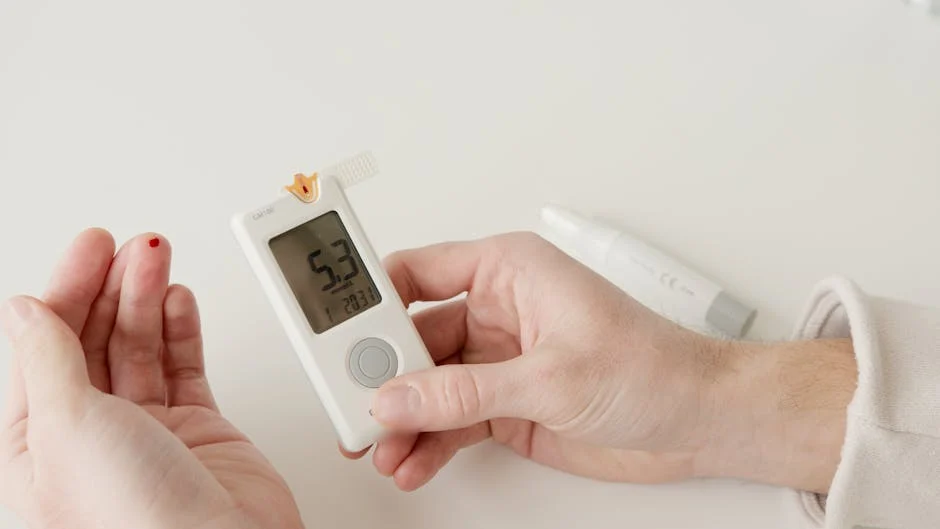Introduction
Diabetes, particularly type 2, is a growing global health concern. Lifestyle factors like diet play a significant role in its development. The Paleo diet, which emphasizes whole, unprocessed foods similar to what our hunter-gatherer ancestors ate, has gained popularity as a potential strategy for managing weight, improving insulin sensitivity, and reducing the risk of diabetes. This article explores how the Paleo diet might help you lower your risk of developing this chronic condition.
Understanding the Link Between Diet and Diabetes
The Role of Insulin Resistance
Type 2 diabetes often begins with insulin resistance, where your body’s cells don’t respond properly to insulin, a hormone that regulates blood sugar. This forces the pancreas to produce more insulin, eventually leading to pancreatic burnout and elevated blood sugar levels.
How Modern Diets Contribute to Diabetes Risk
Modern diets, typically high in refined carbohydrates, processed foods, and sugary drinks, can contribute significantly to insulin resistance. These foods cause rapid spikes in blood sugar, putting extra strain on the pancreas and promoting inflammation.
The Paleo Diet and Diabetes Prevention
Principles of the Paleo Diet
The Paleo diet focuses on foods believed to have been consumed by our Paleolithic ancestors. Key principles include:
- Prioritizing whole, unprocessed foods.
- Emphasizing lean proteins, fruits, vegetables, nuts, and seeds.
- Eliminating grains, legumes, dairy, processed foods, and refined sugars.
Benefits of Paleo for Blood Sugar Control
Here’s how the Paleo diet may help reduce your risk of diabetes:
- Reduced Sugar Intake: By eliminating refined sugars and processed foods, the Paleo diet automatically lowers your sugar intake, helping stabilize blood sugar levels.
- Improved Insulin Sensitivity: Focusing on whole, unprocessed foods, especially healthy fats and lean proteins, can improve insulin sensitivity.
- Weight Management: The high-protein, high-fiber content of the Paleo diet can promote satiety and help with weight management, a critical factor in preventing type 2 diabetes.
- Reduced Inflammation: The Paleo diet’s emphasis on anti-inflammatory foods (like fruits, vegetables, and omega-3 rich fish) may help reduce overall inflammation, which is linked to insulin resistance.
Foods to Eat on a Paleo Diet for Diabetes Prevention
- Lean Proteins: Grass-fed beef, poultry, fish, eggs
- Non-Starchy Vegetables: Leafy greens, broccoli, cauliflower, spinach, peppers
- Fruits: Berries, apples, bananas (in moderation due to higher sugar content)
- Nuts and Seeds: Almonds, walnuts, chia seeds, flax seeds (in moderation)
- Healthy Fats: Avocado, olive oil, coconut oil
Foods to Avoid on a Paleo Diet
- Grains: Wheat, rice, corn, oats
- Legumes: Beans, lentils, peanuts
- Dairy: Milk, cheese, yogurt
- Processed Foods: Sugary drinks, packaged snacks, refined oils
Implementing the Paleo Diet Safely
Consulting with a Healthcare Professional
Before making significant dietary changes, especially if you have existing health conditions or are taking medications, it’s crucial to consult with your doctor or a registered dietitian. They can help you determine if the Paleo diet is right for you and ensure it aligns with your individual needs and health status.
Gradual Transition
Instead of drastically changing your diet overnight, consider transitioning to the Paleo diet gradually. This allows your body to adjust and reduces the risk of digestive discomfort.
Monitoring Blood Sugar Levels
If you already have pre-diabetes or diabetes, closely monitor your blood sugar levels when starting the Paleo diet. Work with your healthcare team to adjust medications as needed.
Potential Challenges and Considerations
- Nutrient Deficiencies: Carefully plan your meals to ensure you’re getting all the necessary nutrients. Consider supplementing with Vitamin D if necessary, especially in climates with limited sunshine.
- Social Situations: Navigating social events and dining out can be challenging on the Paleo diet. Plan ahead and choose restaurants with Paleo-friendly options.
- Cost: Accessing high-quality, grass-fed meats and organic produce can be more expensive. Prioritize affordable options like seasonal vegetables and frozen fruits.
Conclusion
The Paleo diet offers a promising approach to reducing the risk of diabetes by focusing on whole, unprocessed foods and minimizing sugar intake. By improving insulin sensitivity, promoting weight management, and reducing inflammation, the Paleo diet can be a valuable tool in preventing type 2 diabetes. However, it’s important to approach the Paleo diet safely and thoughtfully, consulting with a healthcare professional and making gradual changes to your diet. Remember, diet is only one component of a healthy lifestyle; regular exercise, stress management, and adequate sleep are equally important for overall health and diabetes prevention.
